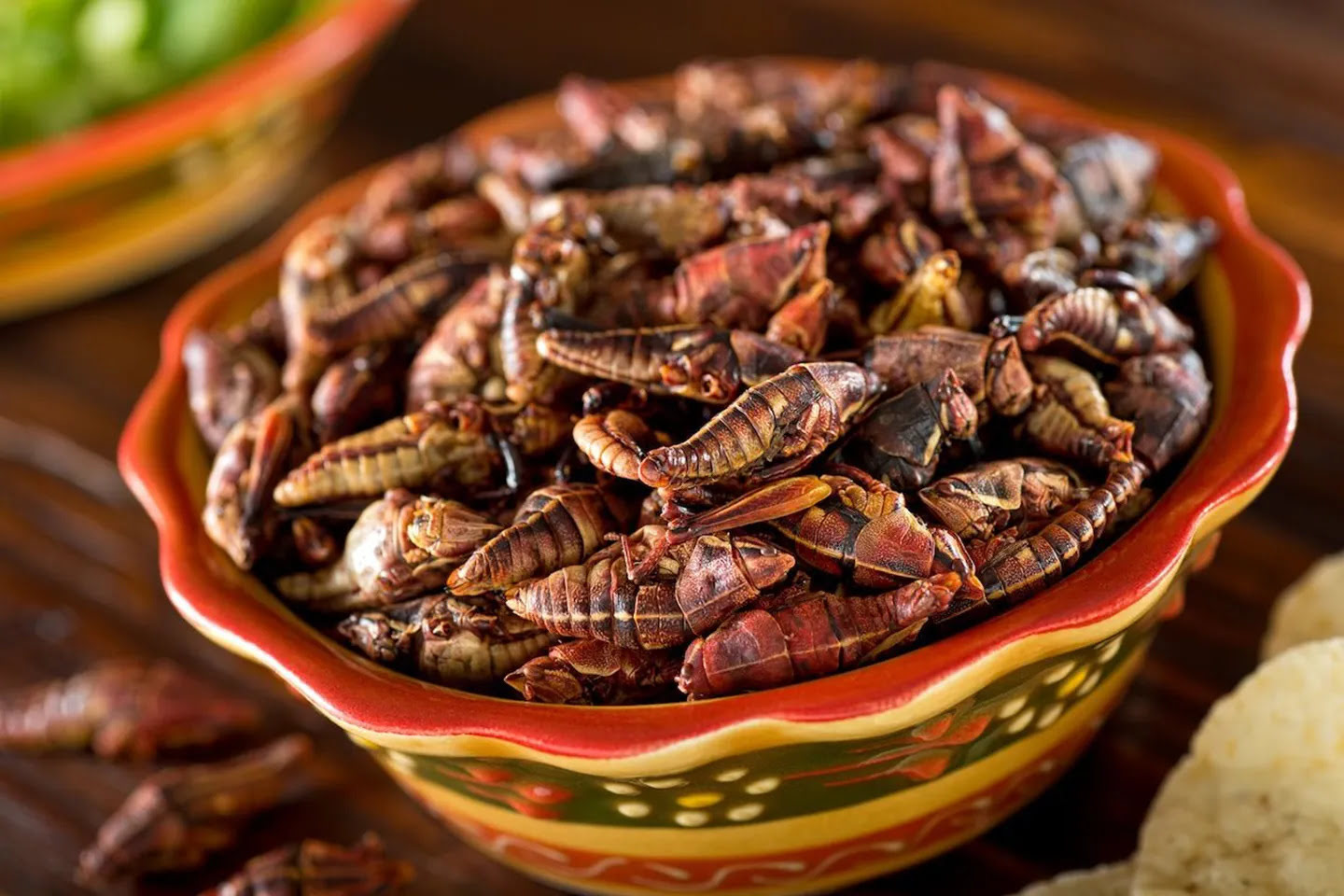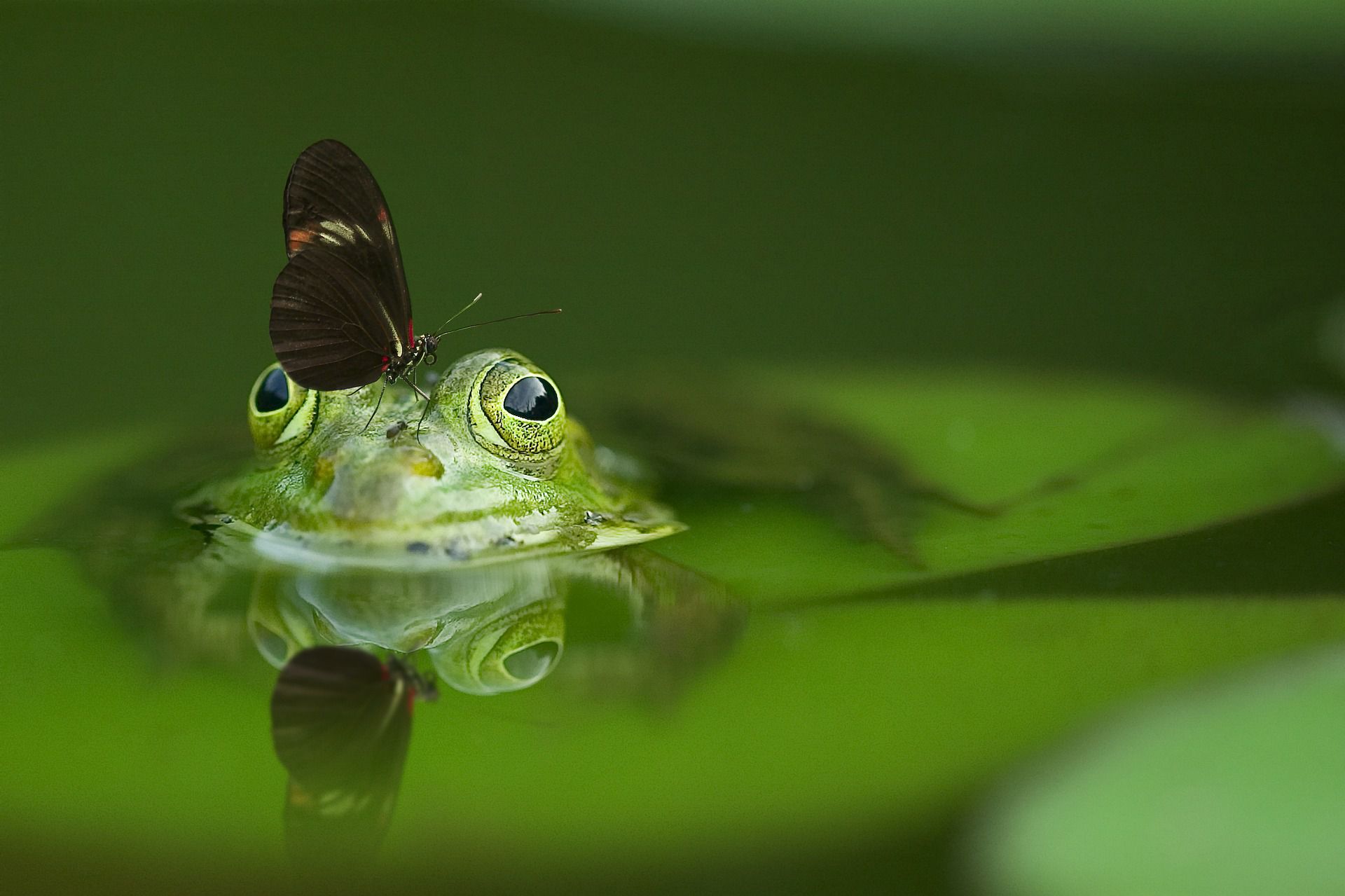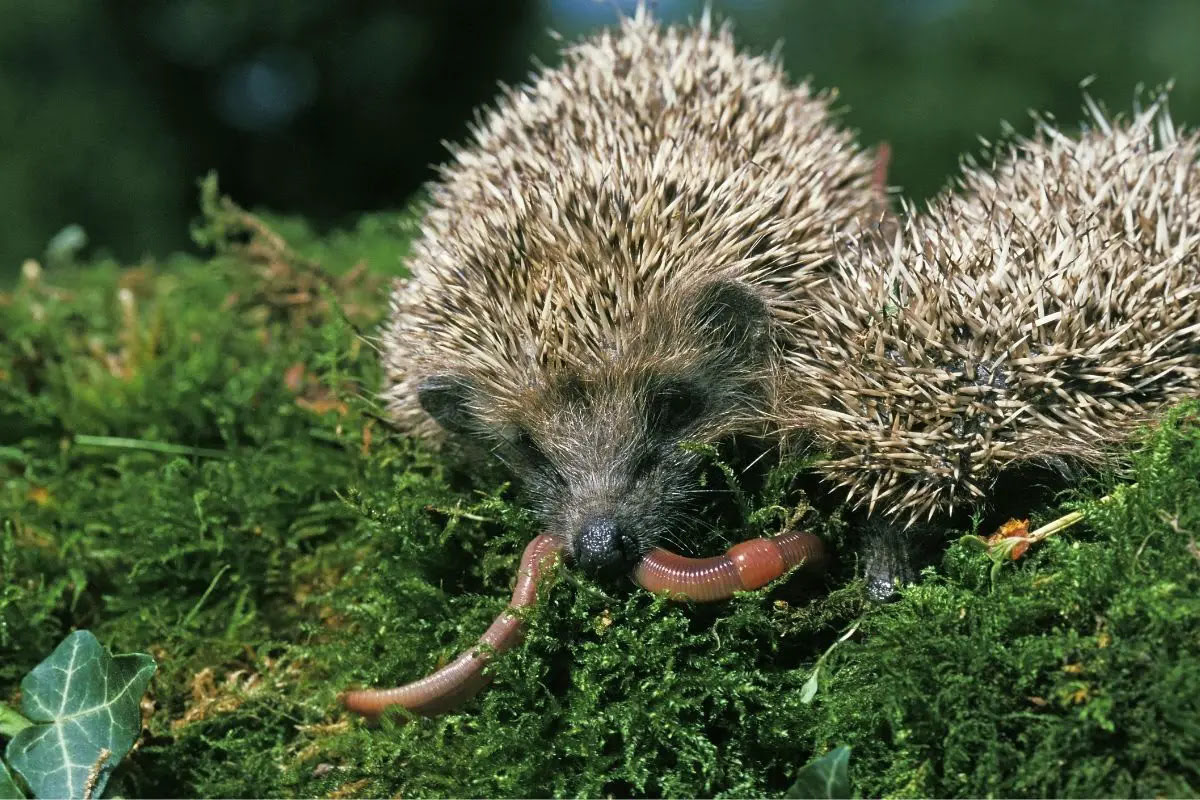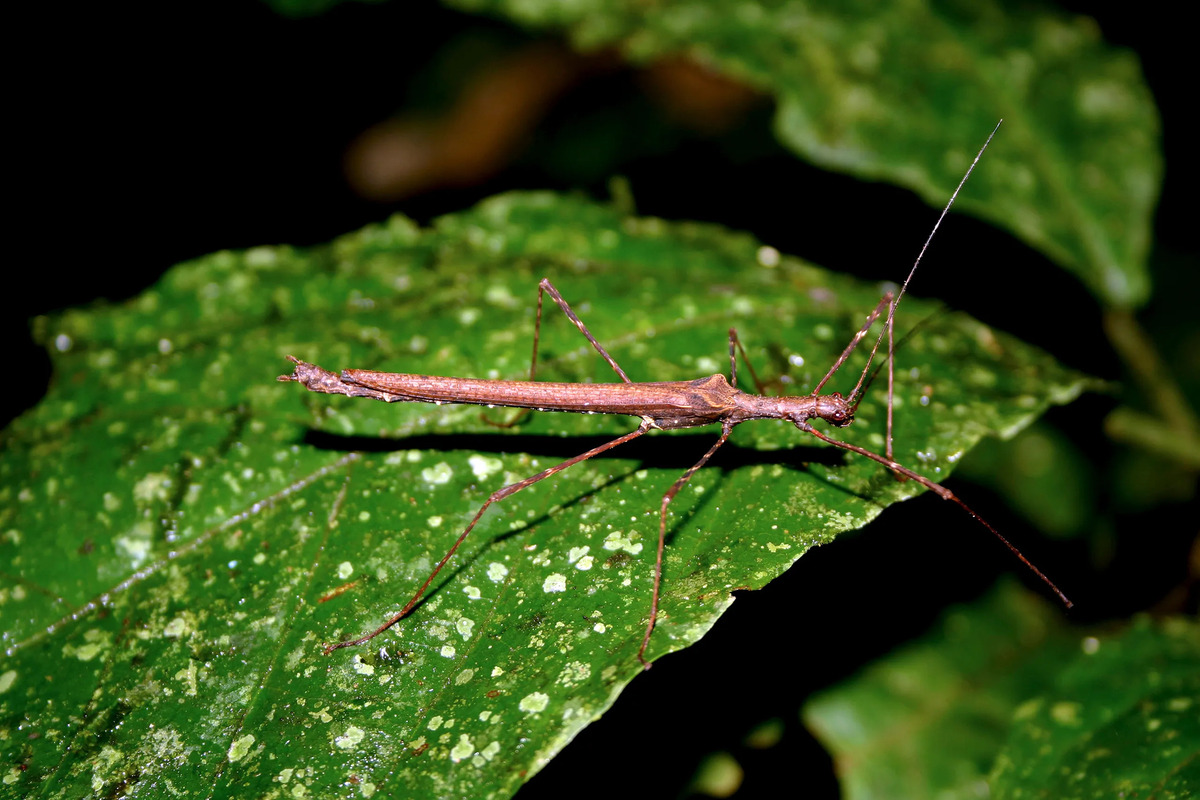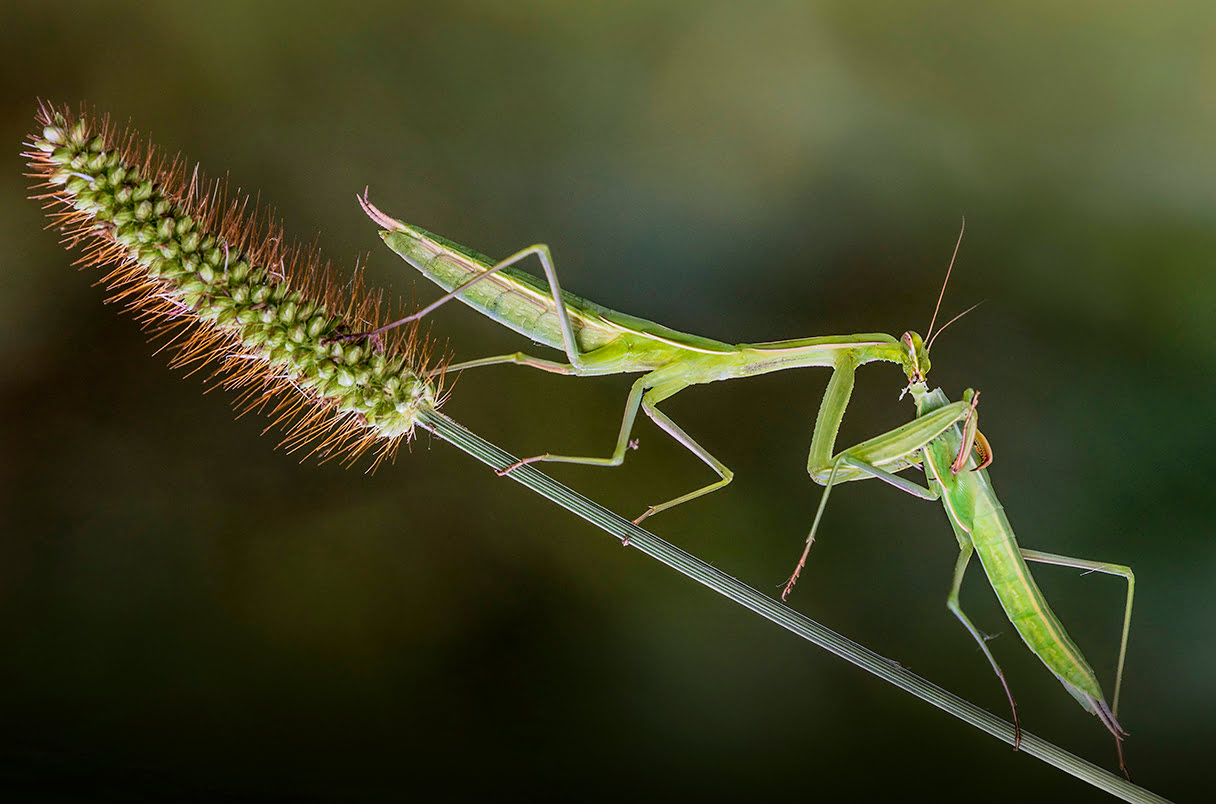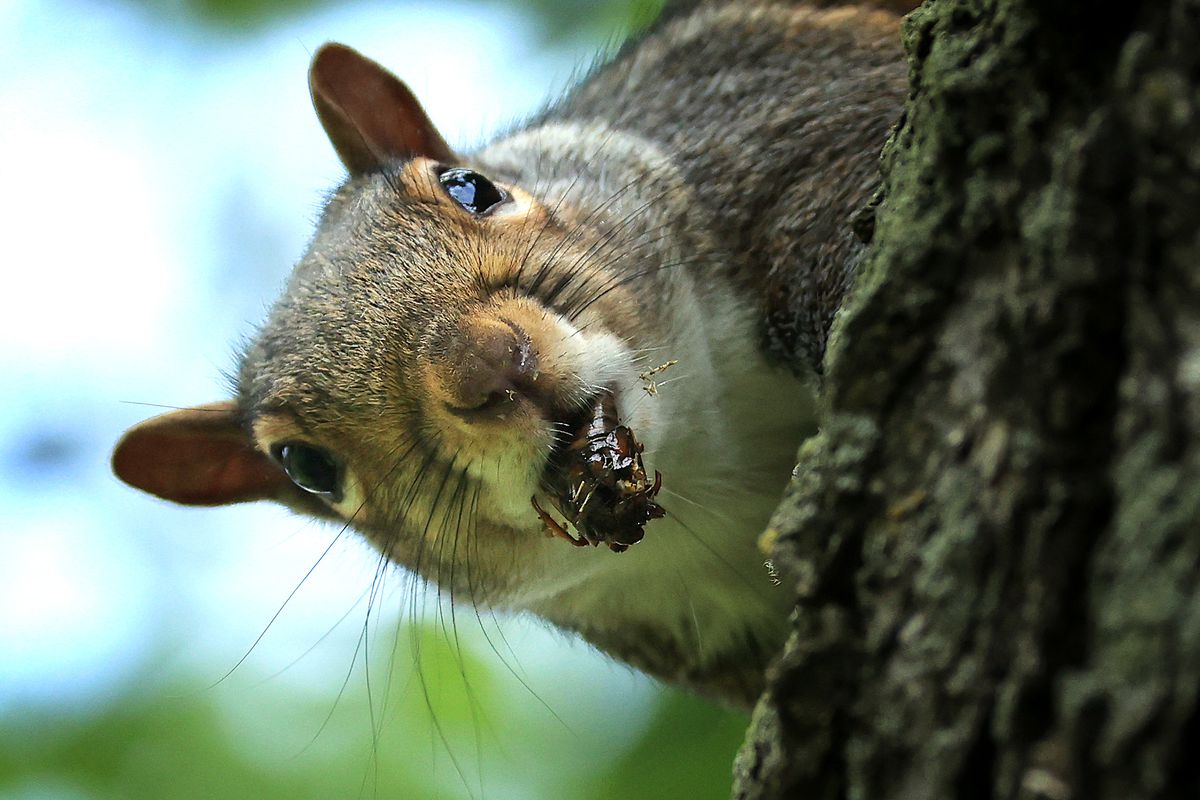Home>Gardening News and Trends>Latest News>What Type Of Insects Do Bats Eat
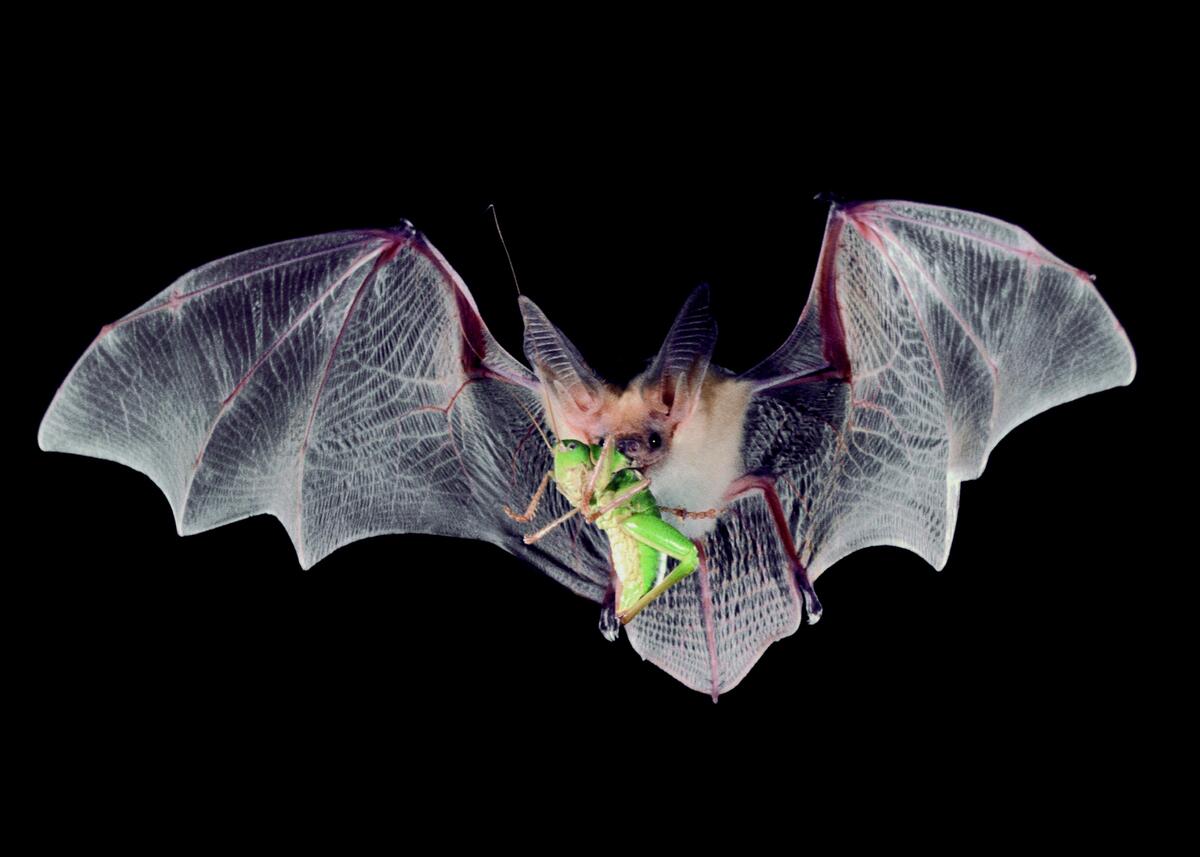

Latest News
What Type Of Insects Do Bats Eat
Modified: January 22, 2024
Discover the Latest News on What Type of Insects Do Bats Eat and Uncover the Fascinating World of Bat Diets. Gain Insights into How Bats Contribute to Pest Control
(Many of the links in this article redirect to a specific reviewed product. Your purchase of these products through affiliate links helps to generate commission for Chicagolandgardening.com, at no extra cost. Learn more)
Table of Contents
Introduction
Bats are fascinating creatures that play a crucial role in our ecosystem. Often misunderstood and feared, bats are actually highly beneficial for humans and the environment. One of their primary contributions is their insatiable appetite for insects. Bats are voracious insectivores, consuming a vast number of insects every night. This natural pest control service makes them invaluable in keeping insect populations in check.
As nocturnal creatures, bats are equipped with unique adaptations that allow them to efficiently locate and capture their prey in the dark. Their exceptional echolocation abilities enable them to navigate and pinpoint insects with echolocation calls and ultrasound waves, making them highly efficient hunters. Bats have developed a diverse diet that includes a wide range of insects, each providing essential nutrients for their survival.
In this article, we will explore the types of insects that bats commonly feed on. From the pesky mosquitoes to the elusive moths, bats have a varied menu that ensures they contribute to maintaining a delicate balance in our ecosystem.
Importance of Bats in Insect Control
Bats are the unsung heroes of insect control, providing an invaluable service by keeping insect populations in check. Their consumption of vast amounts of insects helps to reduce the need for harmful chemical pesticides, making them vital for maintaining the balance of our ecosystem.
One of the key benefits of bats in insect control is their appetite for mosquitoes. Mosquitoes are not only annoying pests that disrupt outdoor activities, but they can also transmit diseases such as malaria, dengue fever, and Zika virus. Bats can consume hundreds of mosquitoes in a single night, significantly reducing their populations and the risk of mosquito-borne diseases.
Bats also play a vital role in controlling agricultural pests. Insect pests, such as moths and beetles, can cause significant damage to crops and result in economic losses for farmers. By preying on these pests, bats help to naturally reduce their numbers, minimizing the need for chemical insecticides. This not only benefits the environment but also promotes sustainable agriculture practices.
Flies are another common prey for bats. Flies are not only a nuisance, but they can also spread diseases to humans and livestock. Bats help to keep fly populations in check, preventing the spread of diseases and contributing to overall hygiene and health.
Wasps and hornets, known for their painful stings, are also on the bat’s menu. By feeding on these insects, bats help to reduce the incidents of stings and allergic reactions in humans. In addition, bats can control populations of other nuisance insects, such as gnats and midges, which are often found around bodies of water or in outdoor areas where people gather.
Overall, bats are highly efficient and effective natural pest controllers. They provide a sustainable and environmentally friendly alternative to chemical insecticides, reducing the negative impact on other beneficial insects, birds, and mammals. By protecting bat populations and promoting their conservation, we can harness their incredible insect control abilities and live in harmony with these unique creatures.
Common Insects Eaten by Bats
Bats have a diverse diet that includes a wide variety of insects. Each species of bat may have its own preferences, but there are several common insect groups that are regularly consumed by bats. Understanding these common insects can give us insight into the vital role bats play in insect control.
Mosquitoes are a top choice for many bat species. With their blood-sucking behavior and ability to transmit diseases, mosquitoes pose a significant threat to human health. Bats have developed a taste for these pests and can consume large quantities of mosquitoes in a single night. This makes them excellent allies in the fight against mosquito-borne diseases.
Moths are another major component of a bat’s diet. Moths are attracted to artificial lights, which often leads to their untimely demise. Bats take advantage of this abundant food source by feasting on moths that gather around street lamps, porch lights, and other light sources. Their ability to catch moths on the wing showcases their exceptional agility and echolocation skills.
Beetles are also on the menu for bats. Many beetles are agricultural pests, causing damage to crops and stored grains. Bats help control beetle populations by actively hunting and consuming these pests. By reducing the number of beetles, bats can prevent crop damage and reduce reliance on chemical insecticides.
Flies, both common house flies and biting flies like horse flies and black flies, are also targeted by bats. These buzzing nuisances not only disturb humans and livestock but can also transmit diseases. Bats help keep fly populations in check, contributing to overall comfort and health in both urban and rural settings.
Wasps and hornets are not spared from the bats’ insect feast. These stinging insects can cause painful reactions and pose significant threats, especially to individuals who are allergic. Bats use their speed and agility to capture and consume wasps and hornets, providing relief from their presence and reducing the risk of stings.
Gnats and midges, commonly found around bodies of water and in outdoor areas, are also targeted by bats. These tiny insects can be a nuisance and can quickly multiply in number. Bats swoop through the air, gobbling up gnats and midges, helping to keep their populations under control and making outdoor activities more enjoyable.
By targeting these common insects, bats serve as natural regulators of pest populations. Their feeding habits not only benefit humans but also contribute to the overall health and balance of ecosystems. Protecting and preserving bat populations is crucial in maintaining effective insect control and promoting a sustainable environment.
Mosquitoes
Mosquitoes are perhaps the most notorious and despised insects due to their itchy bites and their ability to transmit dangerous diseases. These tiny bloodsuckers have caused countless human suffering throughout history. Fortunately, bats are natural allies in the fight against mosquitoes.
Bats have a remarkable appetite for mosquitoes, making them the ultimate predator of these pesky insects. In fact, some bat species can consume up to 1,000 mosquitoes in just one hour. This voracious feeding behavior helps to control the population of mosquitoes and reduces the risk of mosquito-borne diseases.
When it comes to controlling mosquito populations, bats are particularly effective. They can detect the high-frequency wingbeats and unique flight patterns of mosquitoes using their echolocation abilities, allowing them to zero in on their prey with pinpoint accuracy. Bats swoop down from the sky, using their sharp teeth and agile flight to catch and consume mosquitoes in mid-air.
In addition to providing relief from the annoyance of mosquito bites, bats play a crucial role in protecting public health. Mosquitoes are carriers of diseases such as malaria, dengue fever, Zika virus, and West Nile virus, among others. By reducing mosquito numbers, bats help to mitigate the spread of these diseases, safeguarding human populations.
It’s worth noting that while bats consume a significant number of mosquitoes, they don’t completely eliminate them. Mosquitoes are highly adaptable and reproduce rapidly, but the presence of bats helps to keep their numbers in check. By curbing the mosquito population, bats provide a natural and sustainable solution to the ongoing battle against these disease-carrying insects.
It’s important to mention that not all bat species feed exclusively on mosquitoes. Some species have different dietary preferences or may consume mosquitoes only seasonally. However, bats in general play a vital role in maintaining a balance in the mosquito population, which benefits both humans and the ecosystems in which they live.
By recognizing the invaluable contribution bats make in controlling mosquito populations, we can appreciate these remarkable creatures as a natural defense against these disease-transmitting insects.
Moths
Moths are mysterious and fascinating creatures that come in a wide array of shapes, sizes, and colors. While they may be admired for their beauty by some, they can also be a nuisance, especially when they invade our homes or gardens. Fortunately, bats have developed a taste for moths, making them an important ally in keeping moth populations in check.
Bats are experts at hunting moths, thanks to their exceptional echolocation abilities. They emit high-frequency sound waves that bounce off objects, allowing them to detect the presence of prey. When it comes to moths, which are nocturnal insects, bats can locate them and snatch them from the air with impressive precision.
Moths are attracted to sources of light, including streetlights, porch lights, and other illuminated areas. Bats take advantage of this behavior, using the abundant supply of moths around artificial lights to satisfy their hunger. They swoop and dive, their agile flight complemented by their sharp teeth, snatching moths in mid-air.
One of the most fascinating aspects of bats’ predation on moths is their ability to adapt their hunting techniques to the different flight patterns and sizes of the various moth species. Some moths have irregular and unpredictable flight patterns, making them a challenging target for bats. However, bats have evolved strategies to overcome this by adjusting their echolocation calls and flight paths to ensure they can successfully capture their prey.
The consumption of moths by bats is not only beneficial in terms of pest control but also has an ecological impact. Moths are herbivorous insects and can cause damage to plants, crops, and forests in their larval stages. By reducing the number of adult moths, bats indirectly contribute to minimizing the impact of moth larvae on vegetation.
Interestingly, some moth species have evolved defense mechanisms to avoid becoming a bat’s next meal. These moths have developed the ability to detect bat echolocation calls and evade capture by performing evasive maneuvers or emitting warning signals. This ongoing evolutionary “arms race” between bats and moths adds to the intrigue of their predator-prey relationship.
Overall, bats provide a valuable service by preying on moths. By keeping moth populations in check, they not only reduce the annoyance caused by these insects but also help to maintain the balance of ecosystems and protect vegetation from potential damage.
Beetles
Beetles are one of the most diverse and abundant groups of insects, with over 400,000 known species worldwide. While some beetles are harmless or even beneficial, others can be agricultural pests, causing significant damage to crops and stored grains. Luckily, bats are natural predators of beetles and play an important role in controlling their populations.
Bats have evolved to include beetles as part of their diet, utilizing their echolocation abilities and exceptional hunting skills to locate and capture these insects. They have developed a preference for various types of beetles, including both flying and ground-dwelling species.
One group of beetles targeted by bats is the agricultural pest species. These beetles can cause extensive damage to crops, affecting agricultural productivity and leading to economic losses for farmers. By feeding on these pests, bats help to keep their numbers in check and reduce the need for chemical insecticides. This natural pest control service not only benefits farmers but also promotes sustainable agriculture practices.
In addition to agricultural pests, bats also consume other types of beetles that may be nuisances or potential threats to human health. Some beetles, such as carpet beetles or furniture beetles, infest homes and damage fabrics, carpets, and wooden structures. Bats can help mitigate the presence of these pests, reducing the need for chemical treatments and protecting our homes and belongings.
Bats are also known to prey on ground-dwelling beetles, such as burying beetles or burying scarabs. These beetles play important roles in decomposition and nutrient cycling in ecosystems. However, excessive populations of these beetles can have negative impacts on vegetation and soil health. Bats help to regulate their populations by foraging on the ground, contributing to a balanced ecosystem.
It’s important to note that while bats can consume significant numbers of beetles, they are not entirely dependent on them as a food source. Bats have adapted to have a varied diet, which includes different types of insects and even fruits or nectar in some cases.
By including beetles in their menu, bats provide a natural and eco-friendly solution to beetle control. Their predation on beetles helps to reduce the economic impact of agricultural pests, protect homes and belongings, maintain balanced ecosystems, and promote sustainable pest management practices.
Flies
Flies are a common nuisance that can disrupt outdoor activities and spread diseases to humans and livestock. From house flies to biting flies like horse flies and black flies, these buzzing insects can be a constant annoyance. Fortunately, bats have a taste for flies and play a valuable role in keeping their populations under control.
Bats are adept at capturing flies in mid-air, thanks to their exceptional flight and hunting abilities. With their echolocation skills, bats can detect the high-frequency wingbeats and movements of flies, helping them to locate and intercept their prey with remarkable accuracy.
House flies, known for their rapid reproduction and unsanitary habits, can quickly become a nuisance in residential areas. Bats provide a natural solution by actively hunting and consuming these flies, reducing their numbers and promoting a more hygienic environment for humans and animals.
Biting flies, such as horse flies and black flies, are a particular nuisance to humans and livestock due to their painful bites. These flies can not only cause discomfort but can also transmit diseases. Thankfully, bats can play a vital role in controlling populations of biting flies, providing relief from their nuisance and reducing the risk of bites and associated infections.
Bats also target other types of flies, such as fruit flies and blow flies. Fruit flies can infest ripe or decaying fruits, becoming a pest in gardens, orchards, and kitchens. Blow flies, on the other hand, are commonly associated with carrion and can pose health risks due to their ability to transmit bacteria and parasites. Bats help to reduce the populations of these flies, minimizing their impact on crops, hygiene, and public health.
Flies are not only bothersome, but they can also transmit diseases to humans and animals. Some transmitted diseases include salmonellosis, typhoid fever, and certain types of parasitic infections. By controlling fly populations, bats can help reduce the transmission of these diseases, contributing to better public health.
Overall, bats provide a natural and eco-friendly solution to fly control. By actively hunting and consuming flies, they help to maintain a more comfortable and hygienic environment for humans and animals alike, reducing the annoyance and health risks associated with these buzzing insects.
Wasps and Hornets
Wasps and hornets are often feared due to their painful stings and aggressive behaviors, making encounters with these insects a distressing experience. However, bats are skilled predators that target these stinging insects as part of their diet, providing a valuable service by helping to keep their populations in check.
Bats use their agility and speed to capture and consume wasps and hornets in the air. With their sharp teeth and wings, bats are adept at maneuvering and snatching these insects, even in the face of their swift flight and defensive stingers. This contributes to a significant reduction in the number of these potentially harmful pests.
Controlling the populations of wasps and hornets is important for several reasons. Firstly, their stings can be painful and cause allergic reactions in susceptible individuals. By reducing the number of these stinging insects, bats help to minimize the risk of painful stings and associated health complications.
Additionally, wasps and hornets can become a nuisance in outdoor spaces, such as gardens, picnic areas, and parks. They can disrupt outdoor activities and pose a threat to people’s enjoyment. Bats act as natural allies in managing these pest populations, helping to create a more pleasant and safe environment for humans to enjoy outdoor spaces without worry.
Furthermore, wasps and hornets can also impact other insect populations. They are opportunistic predators, preying on a variety of insects including caterpillars, flies, and spiders. Excessive numbers of wasps and hornets can disturb the balance of ecosystems by consuming large quantities of prey insects. Bats assist in keeping the populations of these stinging insects in check, allowing other insect populations to thrive unhindered.
It’s important to note that while bats contribute to controlling populations of wasps and hornets, they do not eliminate them entirely. The presence of bats may help to reduce their abundance and prevent nests from becoming overly large or numerous, but it does not eradicate them completely. A balance is achieved where the populations of wasps and hornets are kept at more manageable levels.
Overall, bats are effective natural predators of wasps and hornets, acting as a biological control for these stinging insects. By reducing their numbers, bats help to mitigate the risk of painful stings, create more enjoyable outdoor environments, and support the ecological balance of other insect populations.
Gnats and Midges
Gnats and midges are small flying insects that are often found in large numbers around bodies of water or in outdoor areas where people gather. While their small size and seemingly harmless presence may not be of major concern, these tiny pests can quickly become a nuisance. Thankfully, bats have a voracious appetite for gnats and midges, helping to keep their populations under control.
Bats are efficient hunters and are capable of catching these tiny insects in mid-flight. With their echolocation abilities, bats can detect and track the rapid movements and high-pitched wingbeats of gnats and midges, enabling them to zero in on their prey with precision.
By consuming significant quantities of gnats and midges, bats help to reduce their numbers, making outdoor environments more comfortable for humans. This is particularly beneficial in areas close to bodies of water, where gnats and midges tend to congregate in large swarms.
Gnats and midges are not only a nuisance, but they can also carry diseases. Some species of midges, in particular, can transmit diseases to animals, such as livestock or pets. By controlling their populations, bats contribute to reducing the risk of disease transmission and help to maintain the well-being of both wild and domesticated animals.
These flying insects are also a vital part of the food chain. They serve as a source of nutrition for a wide range of organisms, including other insects, birds, and bats themselves. By consuming abundant prey such as gnats and midges, bats fulfill their dietary needs and contribute to the ecological balance of their respective habitats.
It’s worth mentioning that while bats are effective at keeping gnats and midges in check, they are not the sole controllers of these insect populations. Other factors such as weather conditions and natural predators also play a role in regulating their numbers. However, bats offer a significant level of natural pest control and can help minimize the impact of gnats and midges on human comfort and animal health.
Overall, bats provide a valuable service in managing the populations of gnats and midges. Their appetite for these small flying insects helps to create more pleasant outdoor environments and contributes to the ecological balance of ecosystems in which they reside.
Conclusion
Bats play an essential role in our ecosystem as voracious insect eaters. Their insatiable appetite for insects makes them valuable allies in controlling pest populations naturally, without the use of harmful chemical pesticides. From mosquitoes and moths to beetles, flies, wasps, hornets, gnats, and midges, bats have a diverse menu of insects that they actively prey upon.
By targeting mosquitoes, bats help to reduce the populations of these disease-transmitting pests, minimizing the risk of mosquito-borne diseases for humans. Their consumption of moths contributes to pest control, protecting crops and decreasing damage to vegetation. Bats also play a crucial role in regulating beetle populations, supporting sustainable agriculture practices, and reducing reliance on chemical insecticides.
Flies, such as house flies and biting flies, are no match for the hunting skills of bats. Bats help to keep fly populations in check, providing relief from annoyance and reducing the spread of diseases. Additionally, bats target wasps and hornets, protecting humans from painful stings and curbing their populations to maintain ecological balance.
Last but not least, bats consume gnats and midges, minimizing their numbers and making outdoor areas more pleasant for humans. This reduces the risk of disease transmission and contributes to the overall health of ecosystems.
Overall, bats are nature’s pest controllers, contributing to a healthier and more balanced environment. By recognizing and appreciating their vital role in insect control, we can promote the conservation and protection of bat populations. Through sustainable practices and habitat preservation, we can ensure that bats can continue to thrive and provide their invaluable services in maintaining the delicate balance of our ecosystems.


